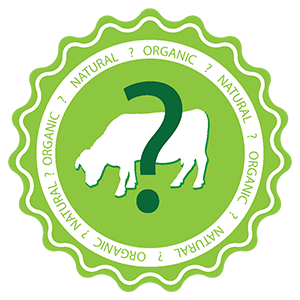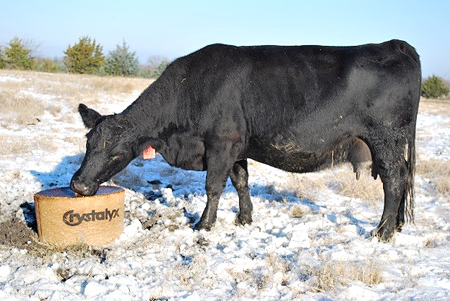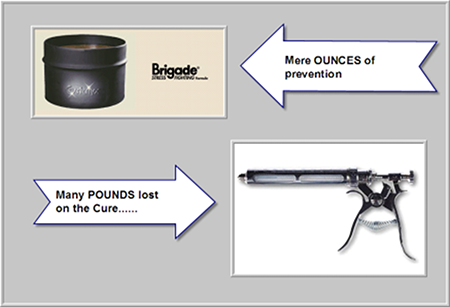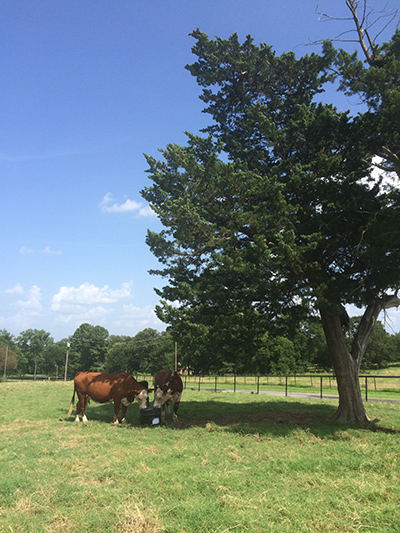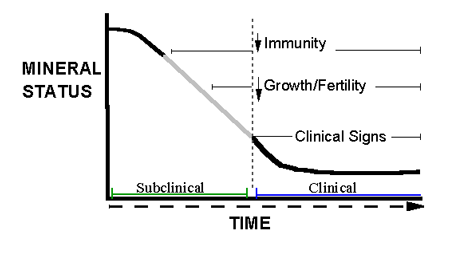Organic or Natural were terms that seemed pretty descriptive and easily understood years ago when describing nutritional supplements used in Livestock production. That was then and now they have seemed to take on lives of their own as they can now also be used to describe very detailed marketing programs resulting in value-added products in both crop and livestock production. With the broader use of both Natural and Organic, we have found confusion with livestock producers when matching supplements to meet not only their nutritional needs but also complying with any marketing programs that they are targeting for specific animals.
CRYSTALYX: A reflection on the past and three things that stood out in 2015
The time between Christmas and the New Year is a special time of the year. All the festivities surrounding Christmas are still being celebrated and the preparation for the end of the year or the New Year, however you view it, is fully at hand. It’s normally a time for families to get together and often reminisce about the past year(s).
Focus on gut health and immunity of cattle
We are just over 12 months away from the Veterinary Feed Directive being fully implemented in January of 2017. We will still have antibiotics for the prevention and treatment of disease but with added paper work and expense.
Production efficiency is the answer to falling prices
In light of recent drops in cattle prices, it is understandable that cattle producers are looking for ways to protect their investments. One such way is to reduce input costs. Considering that 80% of the cost of raising cattle comes from feed, one obvious way to do this is to optimize digestion efficiency. We can optimize digestion efficiency through two simple concepts- feed the rumen and protect the gut.
CRYSTALYX and the new VFD rules
By now, more and more producers are learning about the Veterinary Feed Directive (VFD) that will bring about a change in regulating feed-through antibiotics. There’s been a lot of recent popular press and blog chatter on this subject. The intent of the rule, now finalized, isn’t really that different from when it was introduced and debated at the Food and Drug Administration in 2009. The industry comment period has resulting in some changes related to documentation. The final rules have been published this year (June), and have already taken affect for some drugs and more (the main ones concerned in cattle feeds) will go into effect on January 1, 2017.
Watch out for moldy hay this winter
As winter approaches we need to start thinking about feeding hay. This year has been very hit-or-miss in terms of rainfall. Those who got it, got more than enough. And those who didn’t, well... The problem is that most of the available hay is going to come from those areas that received ample rainfall and faced less-than-ideal harvesting conditions. Under those circumstances, mold becomes an issue.
The heat of the summer is upon us
July is here, and with it, some of the hottest days of the summer are just ahead of us. Self-fed intake of CRYSTALYX® Brand Supplements can be higher in the summer/warmer months. During the manufacturing process, CRYSTALYX® is packaged in to barrels at a temperature of approximately 150 to 175 degrees. At this temperature, CRYSTALYX® is very pliable, much like Play Doh® or thick cookie dough. As it cools, it becomes hard. Hardness is a primary factor in determining the self-fed intake of CRYSTALYX®. As you would expect, if CRYSTALYX® warms back up towards that 150 degree temperature, it will become softer again. That is just the nature of a Low-Moisture Block.
Vitamin E, selenium, and immune function
Picking back up on the topic of trace minerals and immune function (review the blog about zinc here and copper here), I’d like to continue the discussion, but focusing on selenium and vitamin E.
Milk, cheese, ice cream and $500 bull calves
June is Dairy Month which means Dairy Breakfast, Farm City Days and Dairy Food Specials are common in the dairy communities around the country. These events provide a great opportunity to show the consumer how we take care of our cattle and the effort it takes to produce the food and products they enjoy. Opponents of modern agriculture may say we need to return to the old way of doing things and use fear mongering of “Factory Farms” in their message. Some interesting dairy farm statistics of today’s dairy farms compared to dairy farms in 1944 show how today’s farms need fewer cows and resources while producing significantly less waste and green house gases. Source J. of Animal Science, 2009
Prepare now to prevent the summer performance slump
In my travels this week I have seen rows of corn emerging from recently planted fields and even a few fields of mowed hay. All indication of a warm spring which will lead to summer time temperatures and the risk of reduce animal performance due to heat stress.
